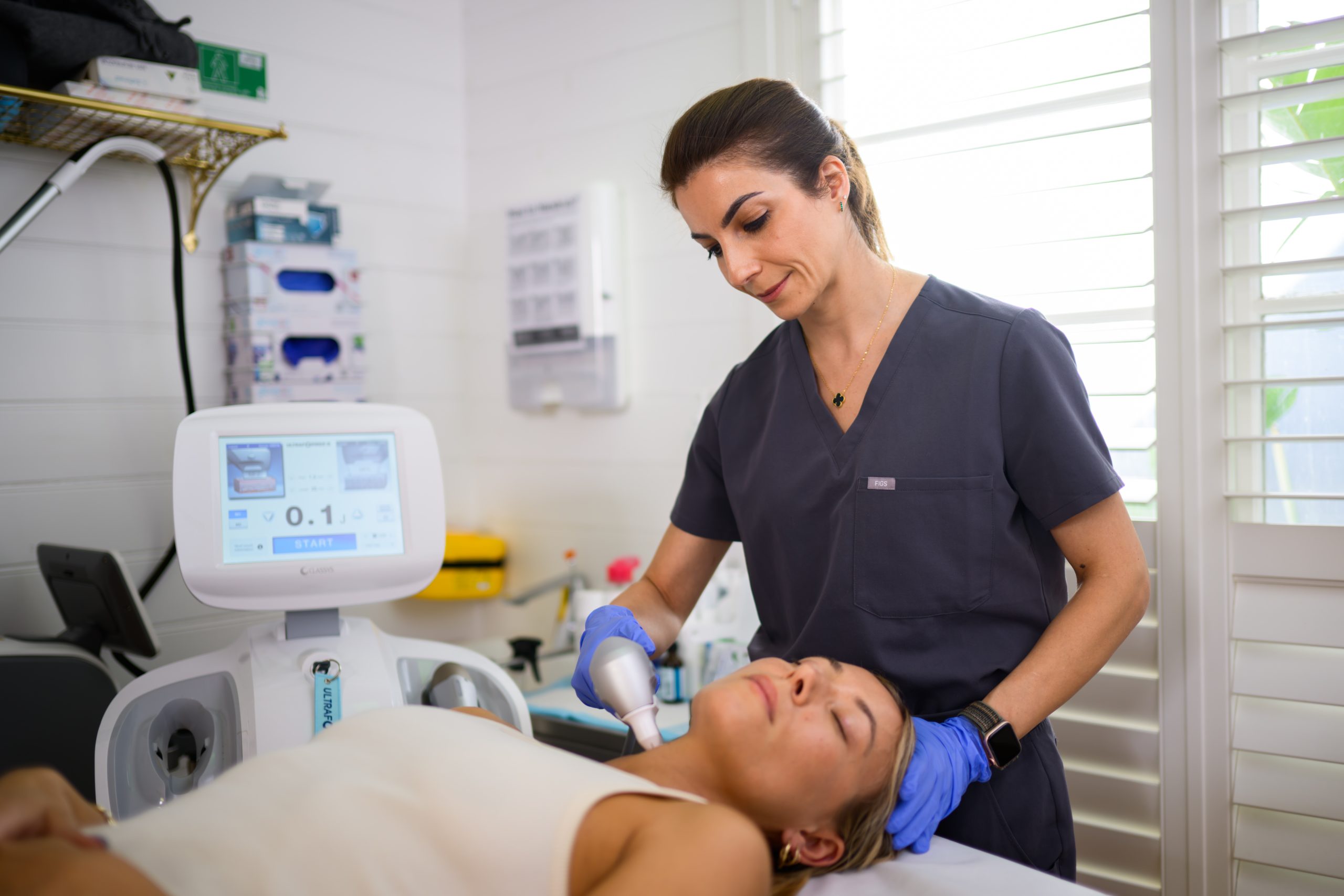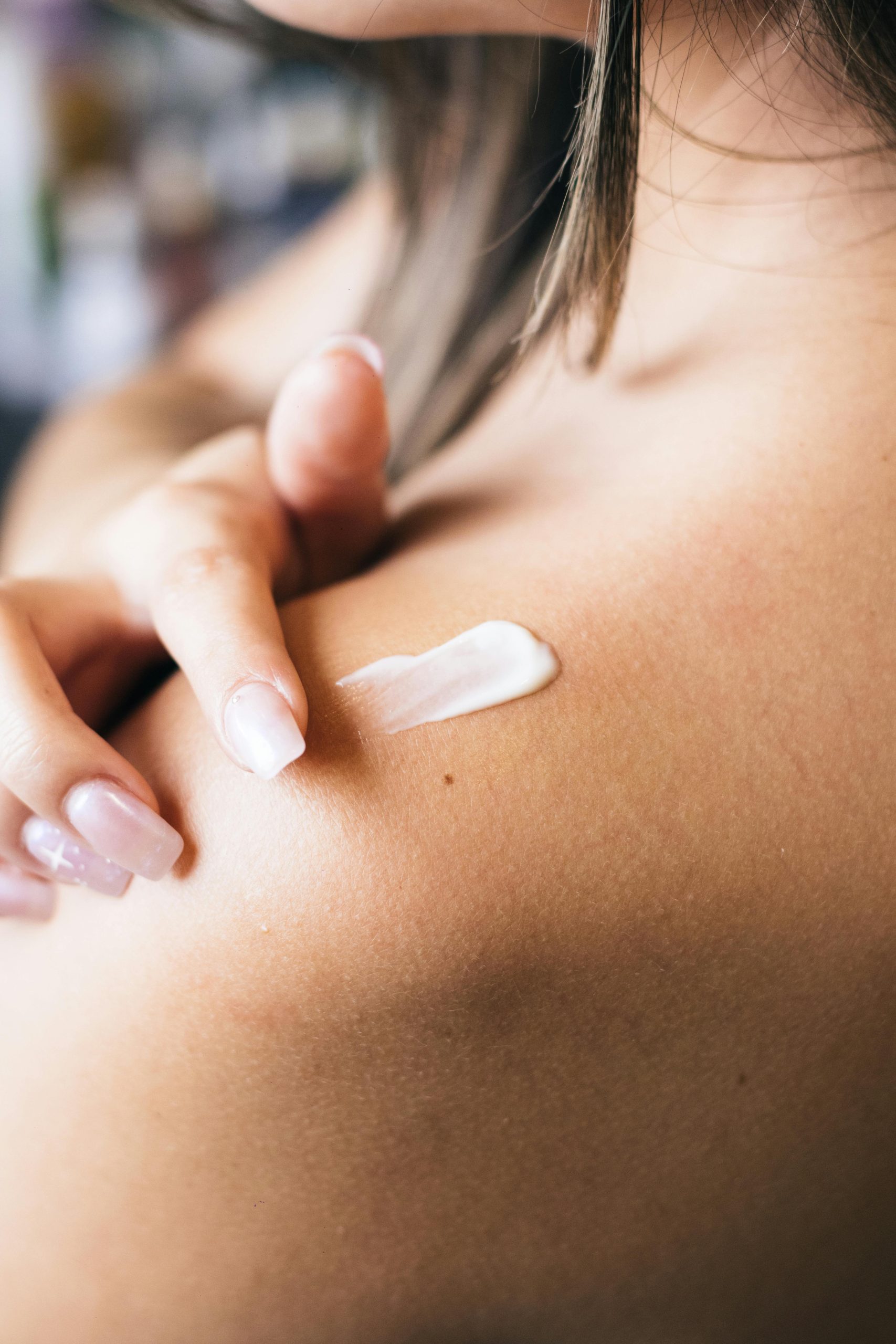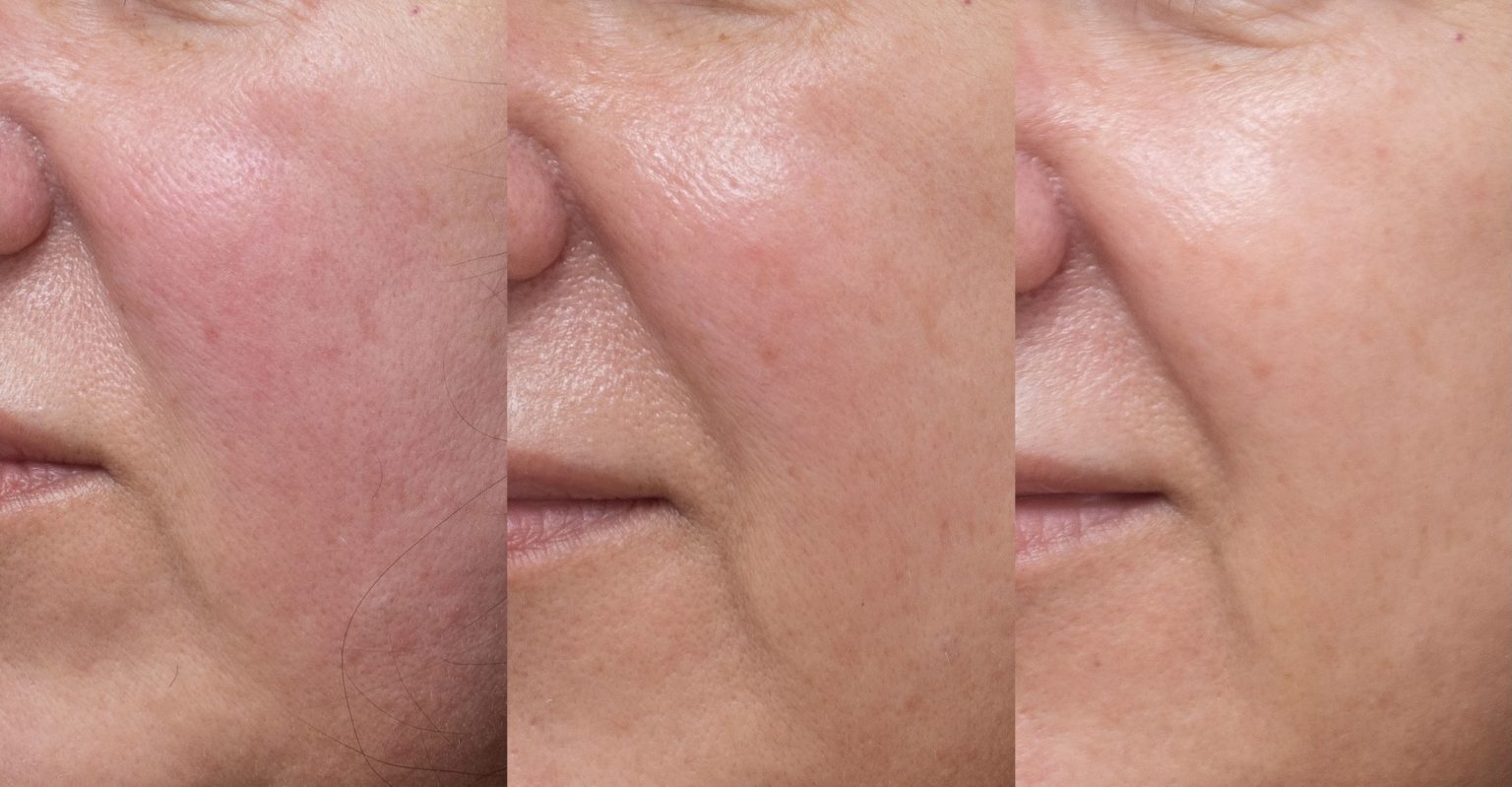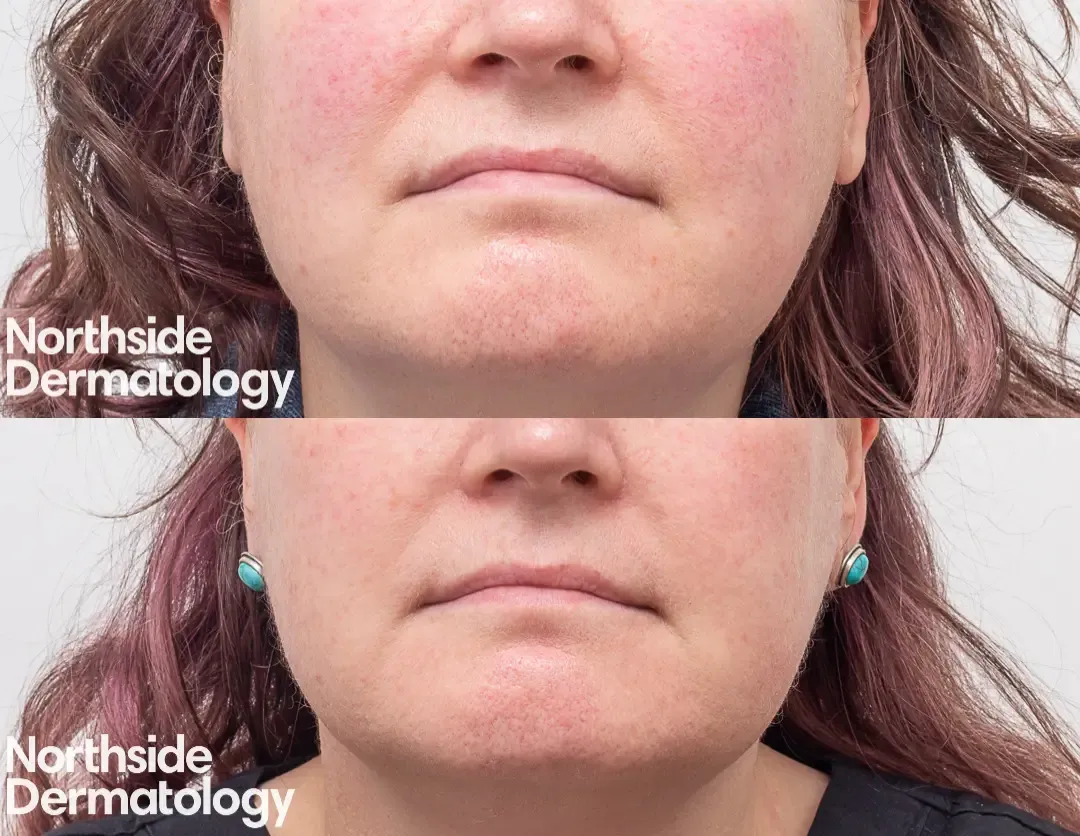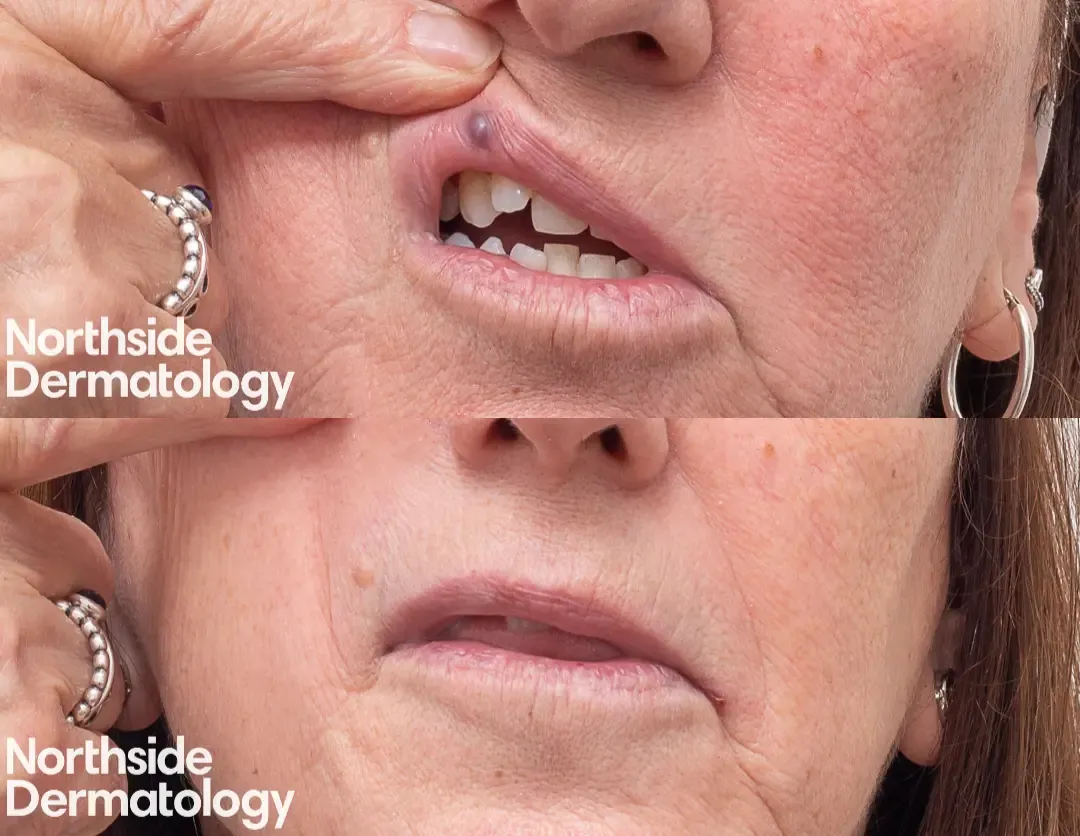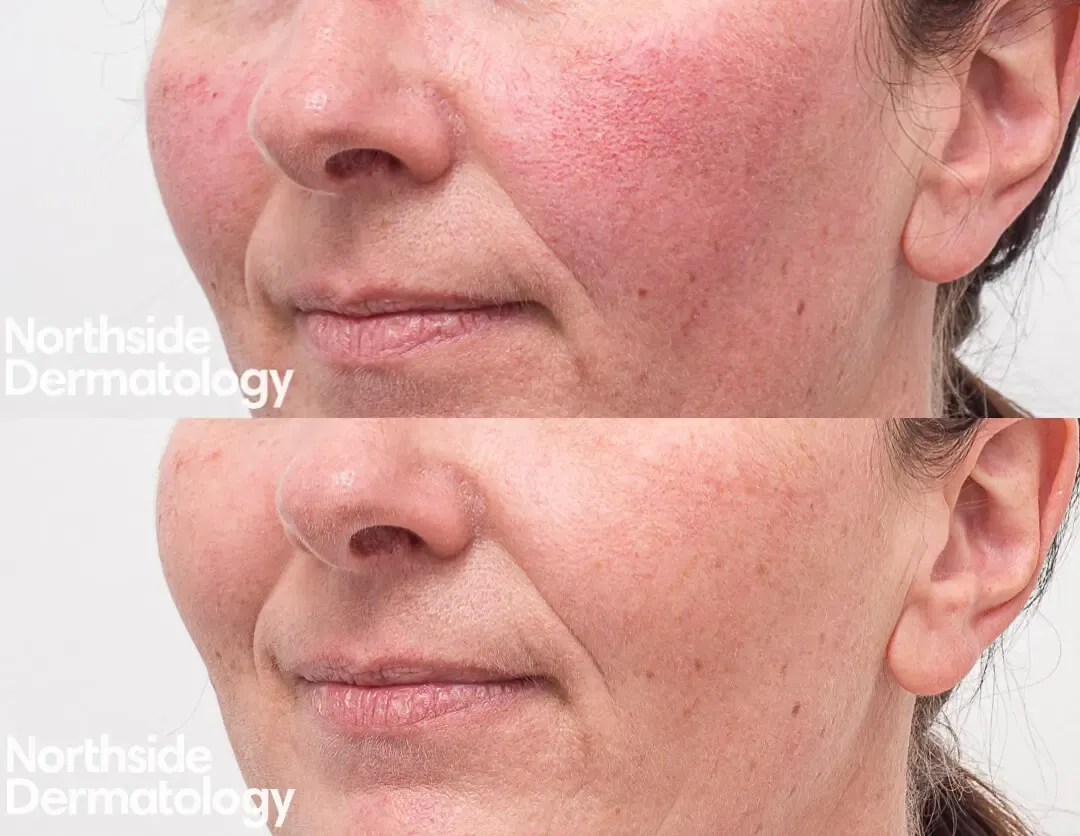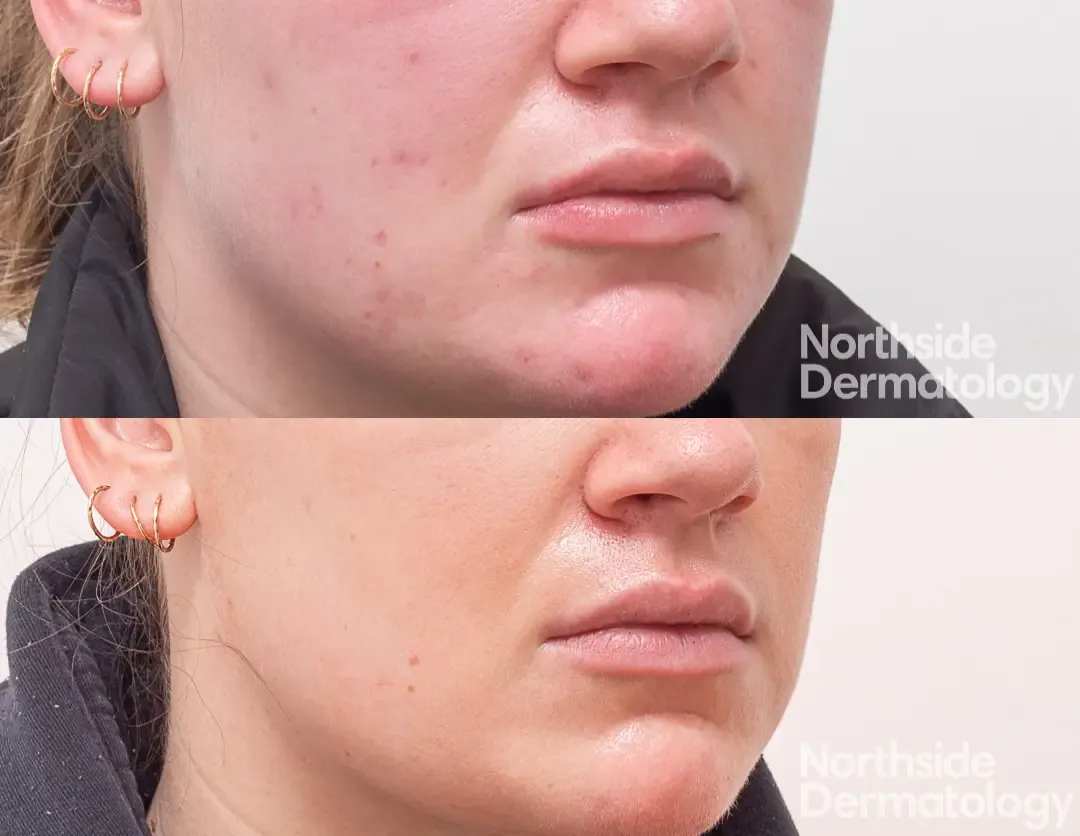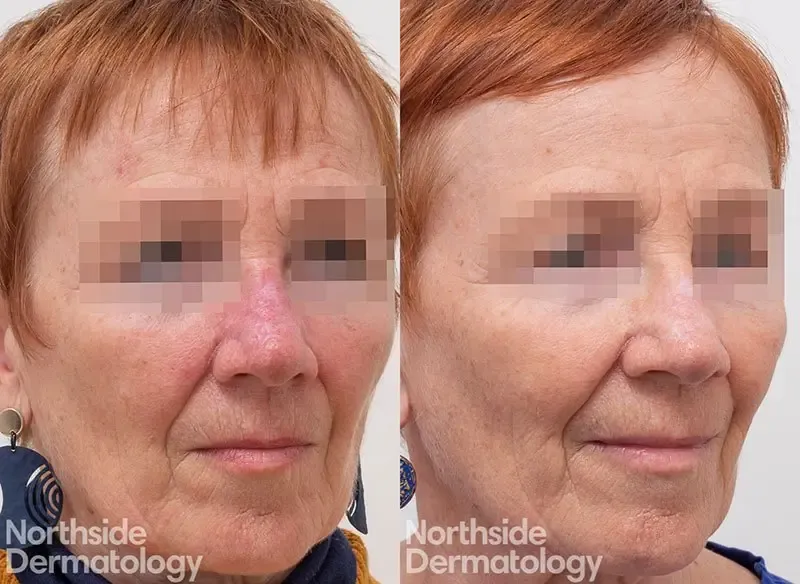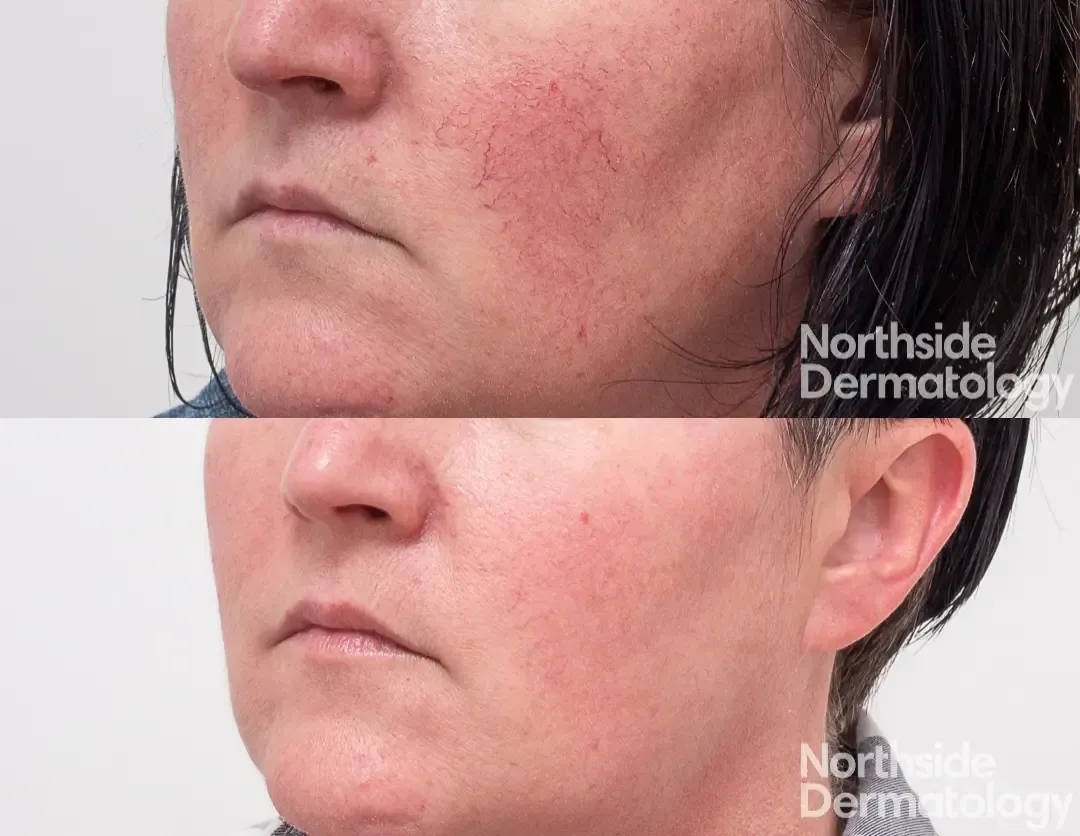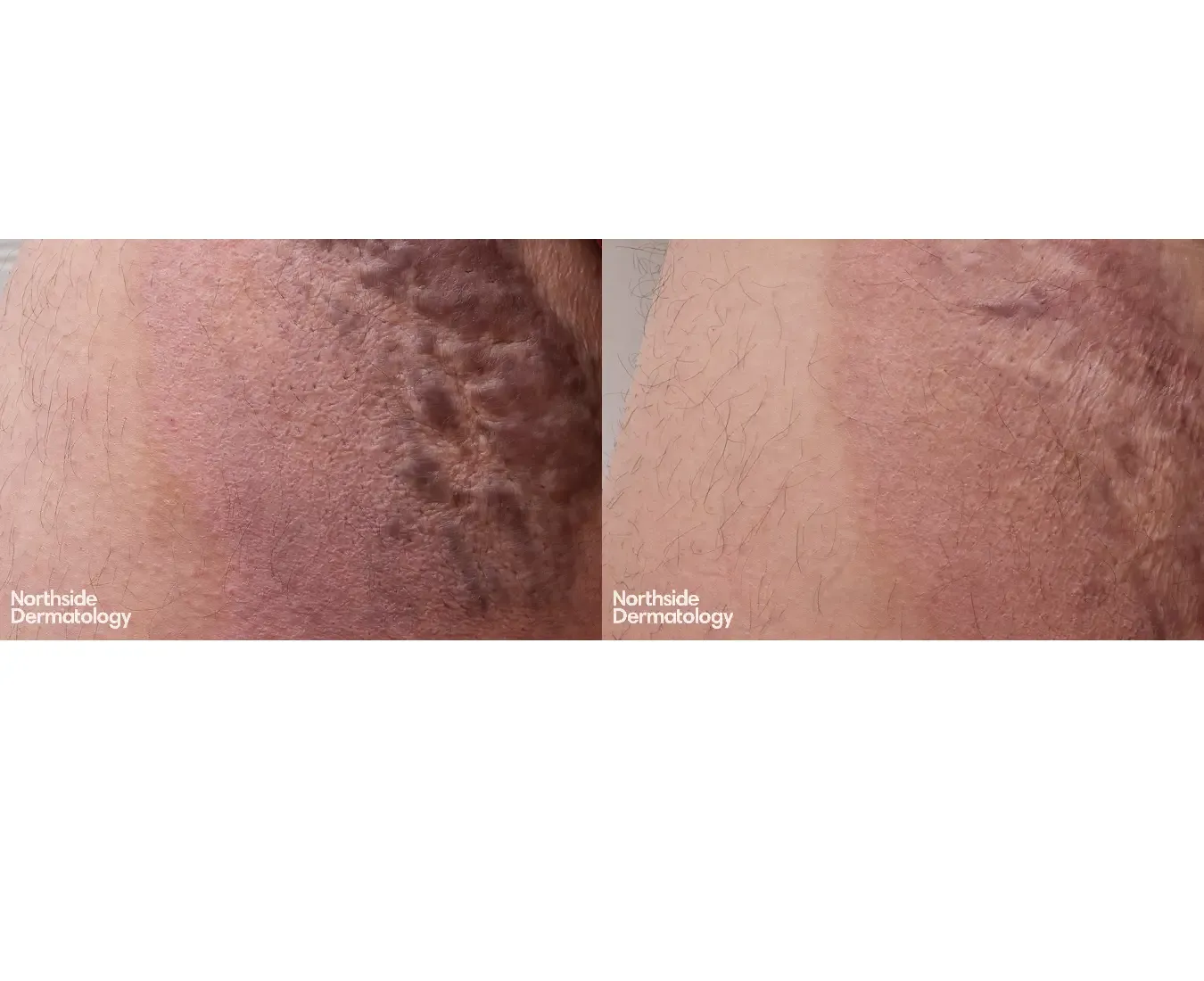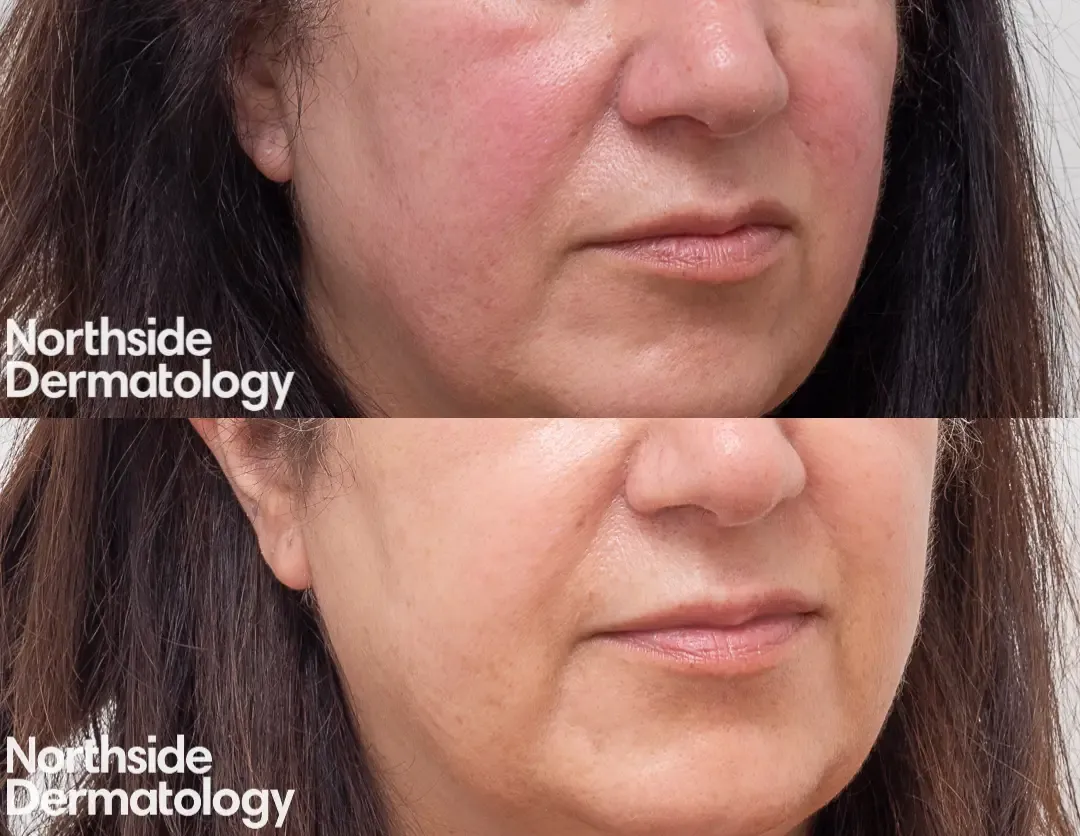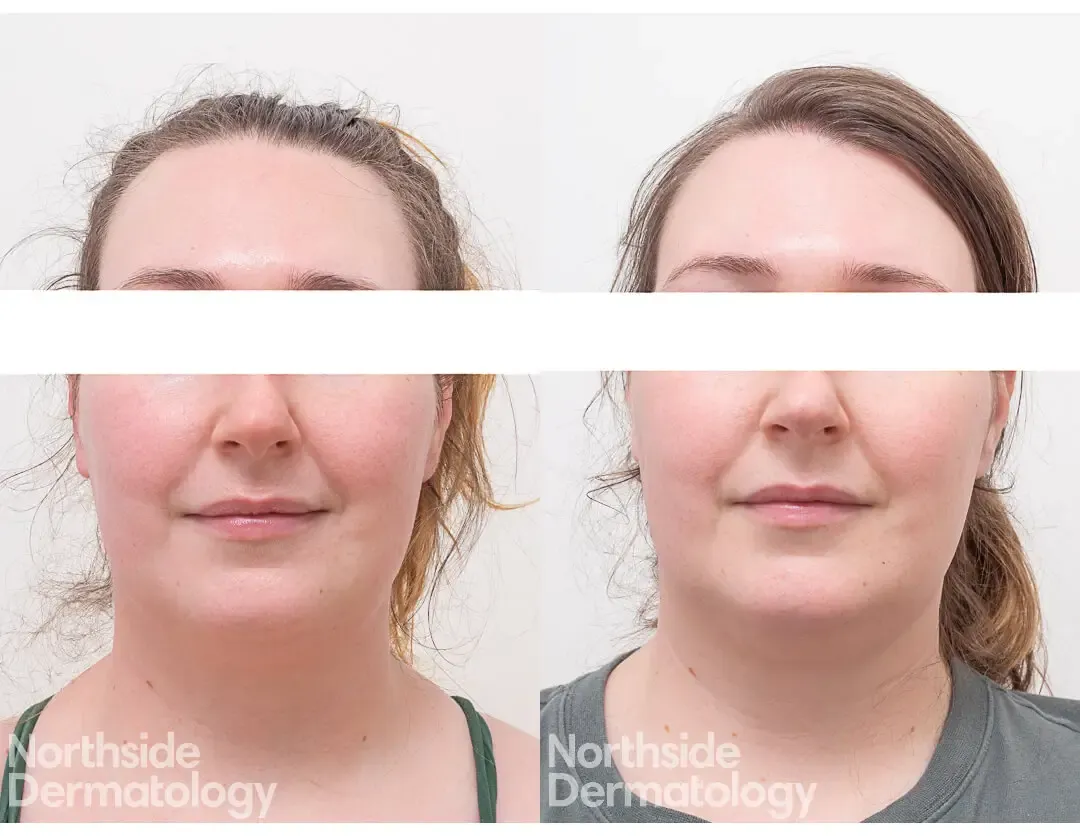
What is Rosacea?
Facial redness can have many causes, including rosacea, sun damage, sensitive skin, or other dermatological conditions. A proper diagnosis is key to understanding what’s contributing to your symptoms.
At Northside Dermatology, our specialists assess the underlying cause of redness and offer tailored treatment plans based on your individual skin needs. For those with rosacea, we provide a range of management options, including prescription therapies, laser treatments, and personalised skincare.
Whether your redness is persistent or comes and goes, we’re here to help you feel more comfortable and confident in your skin.
Learn more about how we support patients with redness and rosacea.


What Are the Most Common Types of Rosacea?
Rosacea encompasses a wide range of signs and symptoms that often combine in recognisable ways. These combinations are used to classify rosacea into four main subtypes:
- Erythematotelangiectatic: Individuals with erythematotelangiectatic rosacea often develop visible blood vessels on the face. Intermittent flushing and fixed redness are characteristics of this subtype.
- Papulopustular: Papulopustular rosacea is characterised by pimple-like lesions. These lesions may be small bumps or filled with pus, and are often mistaken for acne.
- Phymatous: Phymatous rosacea affects men more often than women. It is associated with thickened skin and prominent pores that typically develop on the nose.
- Ocular: Ocular rosacea affects the eye area. Symptoms may include a gritty, dry sensation in the eyes. This subtype is best managed by an eye specialist.
Many patients experience characteristics of more than one type of rosacea at the same time.
What Causes Rosacea?
The precise causes of rosacea remain unknown. Heredity appears to play a role, as rosacea often runs in families. The complex relationship between the immune system, nerve endings and blood vessels of the face also seems to influence an individual’s vulnerability to rosacea. Rosacea is most likely to affect women, people with fair skin (often with blonde hair and blue eyes), and people between the ages of 30 and 60.
Other redness
Redness, whether intermittent or fixed, is a common complaint for patients attending Northside Dermatology. Treating redness effectively begins by determining the underlying cause behind it. Once the source of the redness is identified, a specialist dermatologist can recommend strategies for short-term improvement and long-term management that are tailored to the needs of your unique skin.
Redness can be caused by a number of conditions, including:
- Sun damage
- Rosacea
- Sun-sensitive conditions such as eczema
- Seborrheic dermatitis
- Lupus
- Poikiloderma of Civatte
- Keratosis pilaris rubra faceii
- Post-inflammatory erythema (PIE)
A localised patch of redness may be a precancerous spot, a low-grade skin cancer or even a non-pigmented melanoma. Any concerning lesion should be examined by a specialist dermatologist as soon as possible.
Treatment of redness
The success of treatment relies on accurate diagnosis so a treatment plan can be tailored to the specific cause of the redness. Multiple causes may be present simultaneously. If this is the case, each cause must be addressed separately with a different treatment approach. Determining the source of your skin redness requires assessment by a specialist dermatologist. When the diagnosis is not clear based on a visual examination, a biopsy may be necessary.


Treatments
A holistic approach to rosacea and facial redness is supported at Northside Dermatology. Dermatologists who consult at the clinic may recommend a combination of prescription treatments, in-clinic procedures, and evidence-based skincare to help manage flare-ups, reduce inflammation, and minimise the risk of long-term skin changes.
Vascular Laser
Laser Genesis
Vasular Laser PDT
Sun Damage Prevention Clinic
Frequently asked questions
There are many potential triggers for rosacea and it may take time to identify what causes your skin to flare. Some of the more common triggers include:
- Alcohol
- Caffeine
- Hot beverages
- Exercise
- Heat (showers, saunas, hot tubs, sun etc.)
- Extreme weather conditions
- Sun exposure
- Certain foods
- Skincare products or makeup with irritating ingredients
- Prescription steroid creams
- Stress, anxiety and other strong emotions
A simple, gentle skincare routine is essential for managing rosacea.
- Use soap-free cleansers to wash your face and micellar water to remove makeup
- Wear sunscreen regularly
- Choose a broad-spectrum sunscreen that protects against both UVA and UVB light, ideally one formulated with “physical blockers” (titanium dioxide and zinc oxide)
- Use a light foundation that can be applied without excessive pressure or pulling on the skin
- Choose products that contain protective silicones (dimethicone or cyclomethicone) and niacinamide (an anti-inflammatory ingredient that improves skin barrier function)
- Conceal red areas with green-tinted makeup or sunscreen
- If desired, carefully introduce low-dose retinol once the inflammatory rosacea settles to help build up skin barrier function
To minimise flares, abide by the following guidelines for your skincare routine:
- Do not wash your face using hot water or in the shower under hot stream
- Do not vigorously rub your skin while washing or drying
- Do not use harsh products or ingredients (including toners, scrubs, exfoliants, acetone, alcohol or benzoyl peroxide)
- Do not use wipes to cleanse your face or remove makeup
- Do not apply heavy cream moisturisers to oily skin; light serums or lotions are preferred
- Do not use thick and/or waterproof cosmetics that are difficult to apply and remove
- Do not undergo treatments that could irritate the skin (including regular facials, chemical peels or microdermabrasion); HydraFacial is suitable for rosacea skin
When rosacea cannot be managed by lifestyle changes alone, your specialist dermatologist may recommend a medical approach. There are many treatment options available depending on the type of rosacea being considered:
Inflammatory Rosacea:
- Topical treatments including metronidazole cream or gel, azelaic acid cream or lotion, and ivermectin or permethrin cream
- Oral antibiotics with an anti-inflammatory effect
- Low-dose isotretinoin taken orally
- LED light therapy
- Laser Genesis
- Usually a combination of above
Erythrotelangiectatic Rosacea:
- Topical treatments including brimonidine gel and oxymetazoline hydrochloride cream
- Vascular laser
- Laser Genesis
In the event your rosacea does not respond to the recommendations of your specialist dermatologist, the treatment approach must be reassessed. The factors to consider include:
- Is there an unidentified trigger that is causing your rosacea to flare?
- Has an appropriate treatment been chosen for the subtype of rosacea? Different types of rosacea need to be treated differently.
- Is the diagnosis correct? Many other skin conditions – including eczema, seborrheic dermatitis, periorificial dermatitis, allergic contact dermatitis, keratosis rubra faceii and photosensitive conditions such as lupus – can mimic or coexist with rosacea. A skin biopsy may be required to identify the condition and ensure the correct treatment is implemented.
There are many redness-causing conditions that respond well to laser treatment. Our vascular laser emits two wavelengths of laser energy to target both superficial redness and deeper redness. We also offer Laser Genesis to improve redness and promote collagen production.
These treatments can be used to improve redness related to chronic sun damage, rosacea, flushing, visible blood vessels and keratosis pilaris rubra faceii. For Poikiloderma of Civatte, the specialist dermatologists use a combination of vascular laser and pigment laser to target both the redness and brown discolouration. For extensive precancerous changes, the dermatologists who consult at Northside Dermatology use either a cream treatment, photodynamic therapy (PDT) or laser PDT.
Flushing occurs when blood vessels in the skin dilate. The vascular laser and laser genesis can safely constrict the blood vessels responsible for the redness with minimal discomfort or downtime. Certain prescription medications can also suppress flushing reactions by regulating vascular activity.
Post inflammatory erythema refers to pink or red discolouration that is left behind after acne and other inflammatory skin conditions. Though PIE often improves on its own, it can take weeks to months to fully resolve. For some patients, PIE does not fade. The vascular laser or Laser Genesis can be used to treat persistent redness related to PIE.


